Abstract
OBJECTIVE: To describe effective teaching behaviours of rural family medicine preceptors. DESIGN: Descriptive qualitative study using the critical incident technique. SETTING: Rural Manitoba community practices affiliated with the University of Manitoba's 8-week family medicine/community medicine rotation (clinical clerkship). PARTICIPANTS: All family medicine preceptors and fourth-year medical students involved in two family medicine rotations from Mar. 11 to June 14, 1991. During the first rotation all 12 students and 21 preceptors participated. During the second rotation 12 of the 13 students and 20 of the 21 preceptors participated. The overall response rate was 97%. OUTCOME MEASURES: Effective and less effective preceptor teaching behaviours. RESULTS: During 120 telephone interviews (48 with the students and 72 with the preceptors) 275 critical teaching incidents were elicited. Over 800 teaching behaviours were identified, and seven main categories describing effective teaching behaviours of preceptors were formed: (a) actively involves the student, providing adequate supervision and appropriate independence, (b) develops and fosters a supportive interpersonal relationship with the student to facilitate learning, (c) emphasizes problem solving and the understanding of general principles, (d) balances clinical and teaching responsibilities, (e) demonstrates clinical and professional competence, (f) uses an organized approach, including goal setting and summation, and (g) provides the student with ongoing feedback, assessments and evaluations. CONCLUSION: The teaching behaviours described in this study augment and corroborate findings from previous studies on clinical teaching and provide a better understanding of effective teaching behaviours. The findings suggest a curriculum for a faculty-development program for rural family medicine preceptors.
Full text
PDF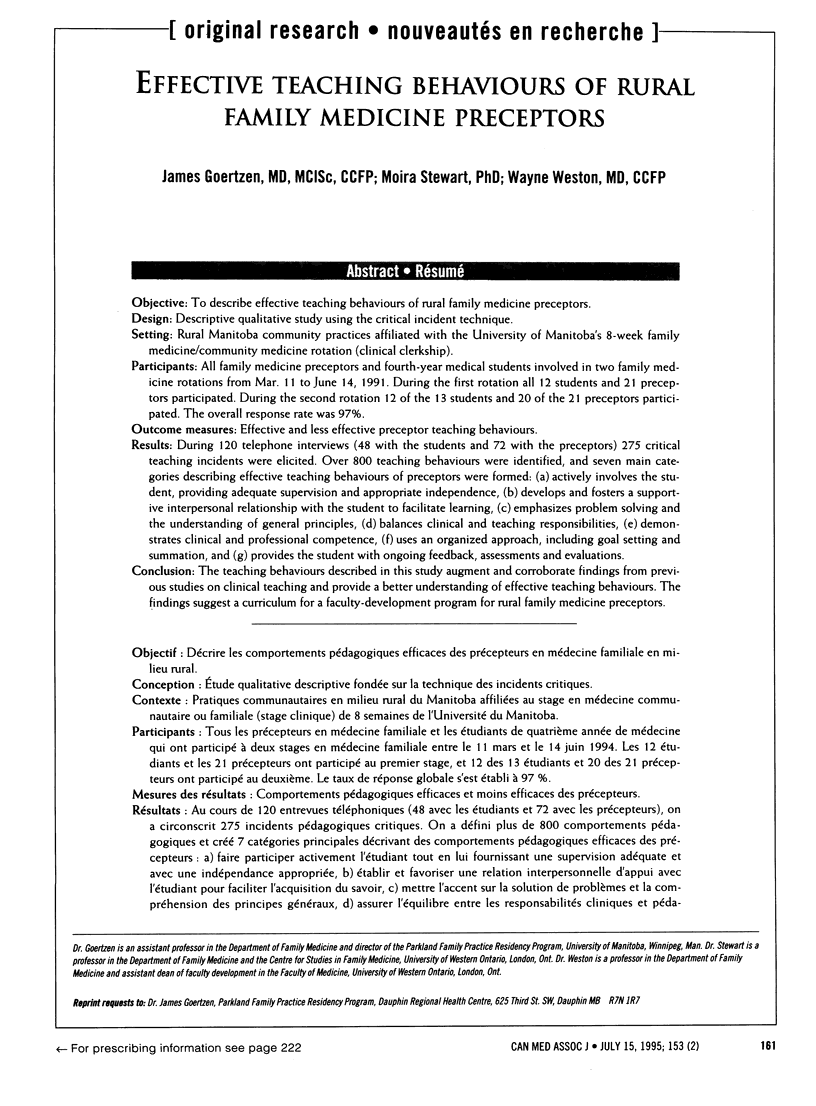

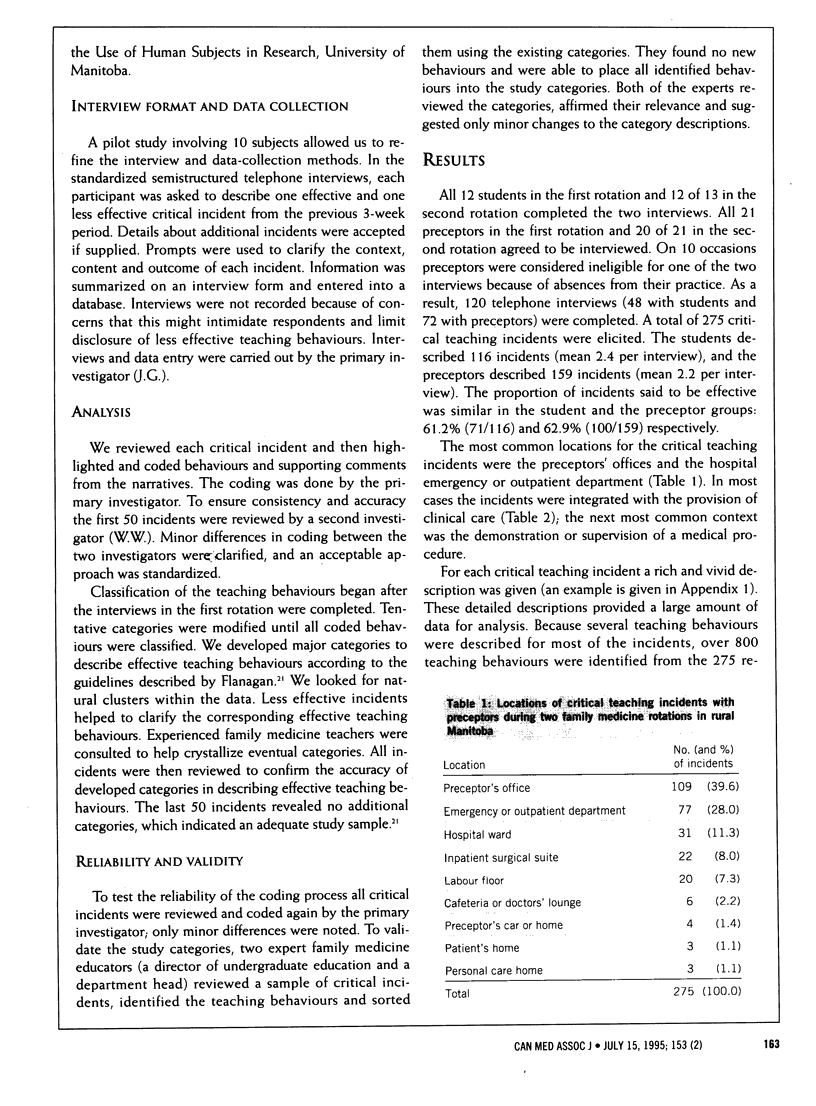
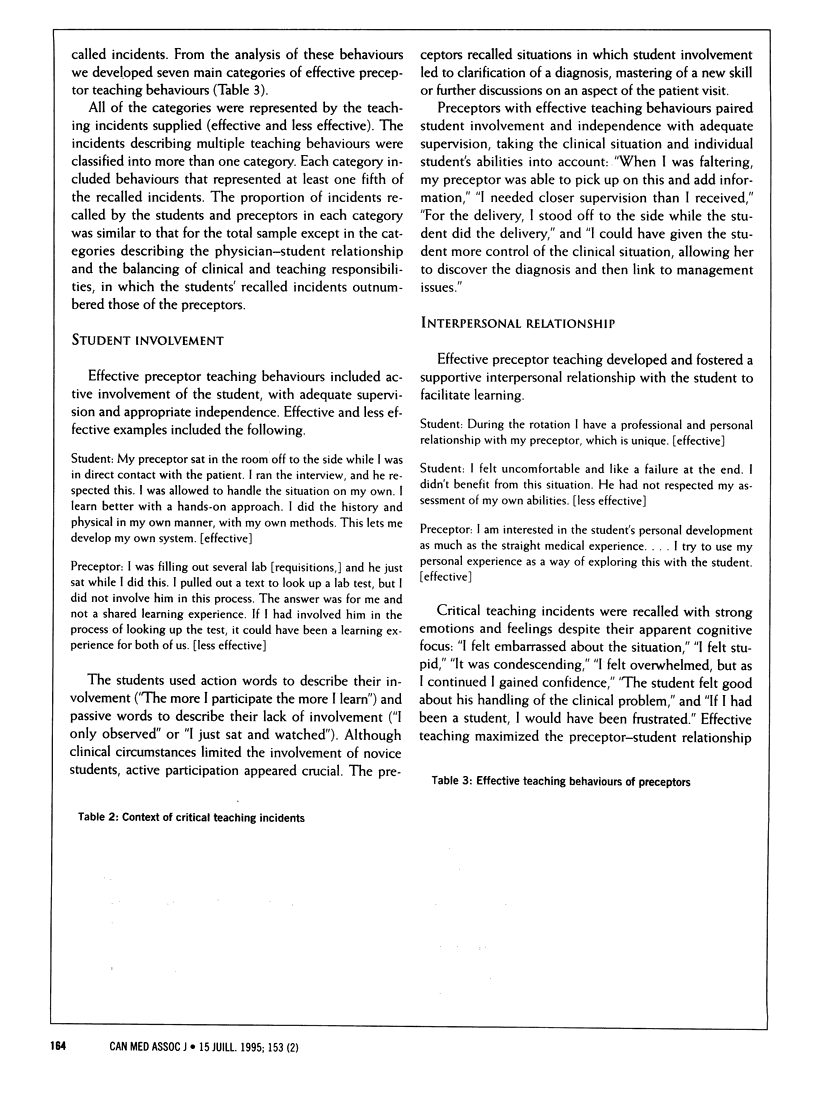
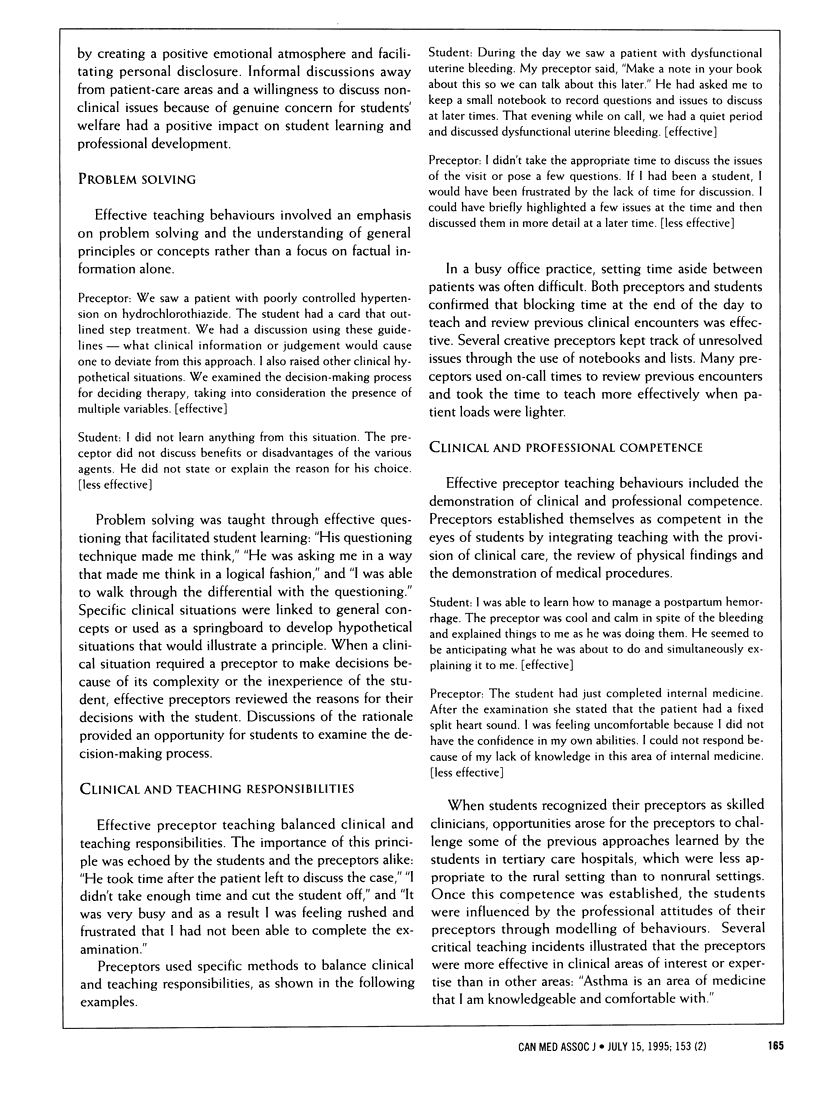
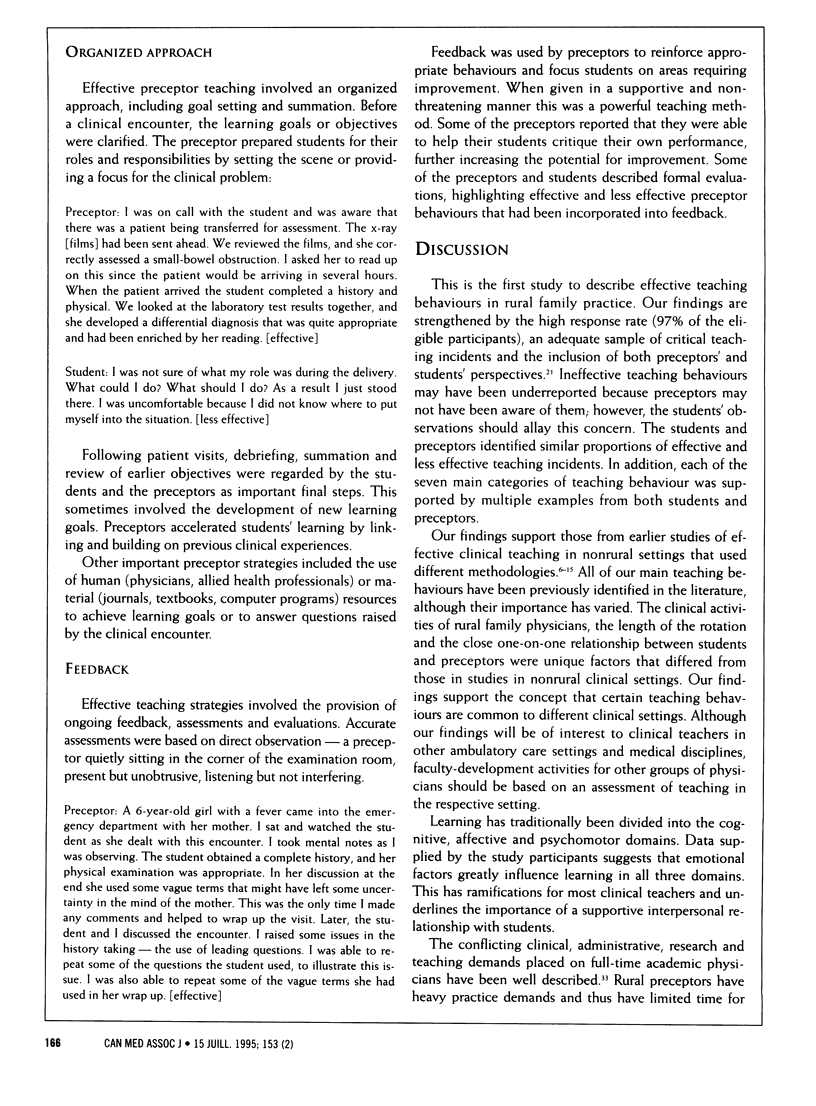
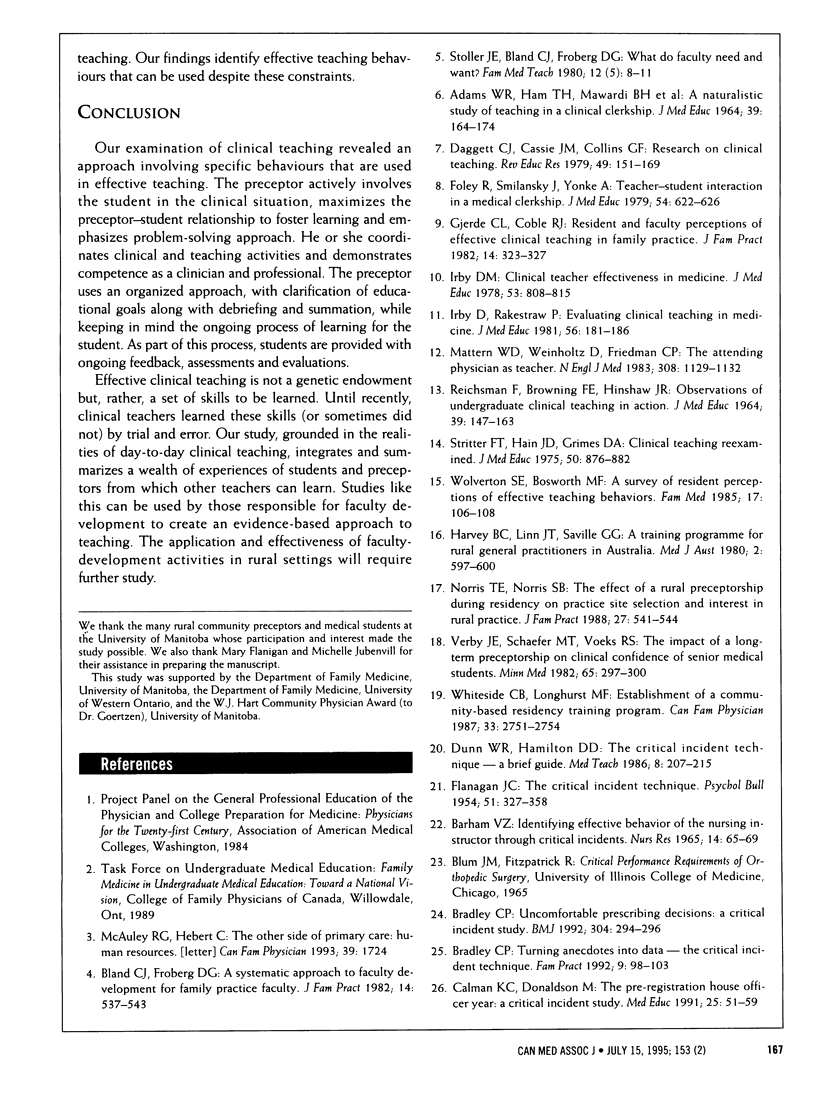
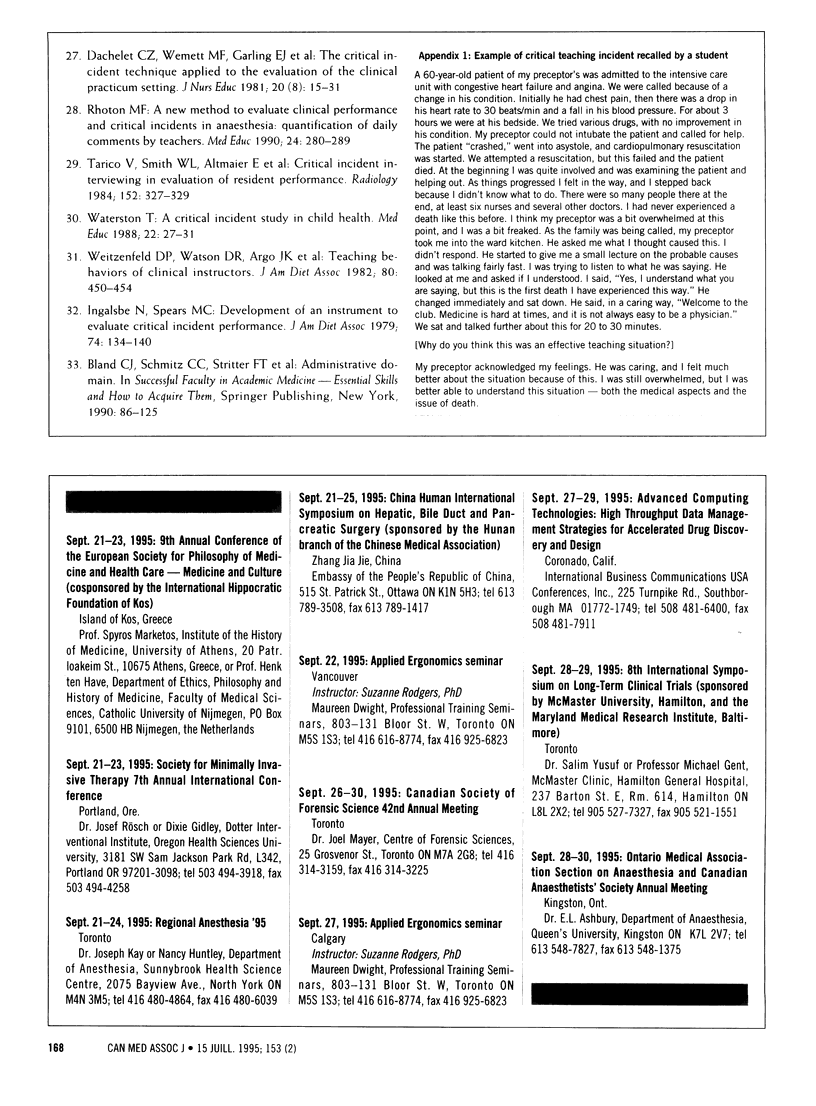
Selected References
These references are in PubMed. This may not be the complete list of references from this article.
- ADAMS W. R., HAM T. H., MAWARDI B. H., SCALI H. A., WEISMAN R., Jr A NATURALISTIC STUDY OF TEACHING IN A CLINICAL CLERKSHIP. J Med Educ. 1964 Feb;39:164–174. [PubMed] [Google Scholar]
- BARHAM V. Z. IDENTIFYING EFFECTIVE BEHAVIOR OF THE NURSING INSTRUCTOR THROUGH CRITICAL INCIDENTS. Nurs Res. 1965;14:65–69. doi: 10.1097/00006199-196501410-00023. [DOI] [PubMed] [Google Scholar]
- Bland C. J., Froberg D. G. A systematic approach to faculty development for family practice faculty. J Fam Pract. 1982 Mar;14(3):537–543. [PubMed] [Google Scholar]
- Bradley C. P. Turning anecdotes into data--the critical incident technique. Fam Pract. 1992 Mar;9(1):98–103. doi: 10.1093/fampra/9.1.98. [DOI] [PubMed] [Google Scholar]
- Bradley C. P. Uncomfortable prescribing decisions: a critical incident study. BMJ. 1992 Feb 1;304(6822):294–296. doi: 10.1136/bmj.304.6822.294. [DOI] [PMC free article] [PubMed] [Google Scholar]
- Calman K. C., Donaldson M. The pre-registration house officer year: a critical incident study. Med Educ. 1991 Jan;25(1):51–59. doi: 10.1111/j.1365-2923.1991.tb00026.x. [DOI] [PubMed] [Google Scholar]
- Dachelet C. Z., Wemett M. F., Garling E. J., Craig-Kuhn K., Kent N., Kitzman H. J. The critical incident technique applied to the evaluation of the clinical practicum setting. J Nurs Educ. 1981 Oct;20(8):15–31. doi: 10.3928/0148-4834-19811001-04. [DOI] [PubMed] [Google Scholar]
- Dunn W. R., Hamilton D. D. The critical incident technique--a brief guide. Med Teach. 1986;8(3):207–215. doi: 10.3109/01421598609036857. [DOI] [PubMed] [Google Scholar]
- FLANAGAN J. C. The critical incident technique. Psychol Bull. 1954 Jul;51(4):327–358. doi: 10.1037/h0061470. [DOI] [PubMed] [Google Scholar]
- Foley R., Smilansky J., Yonke A. Teacher-student interaction in a medical clerkship. J Med Educ. 1979 Aug;54(8):622–626. doi: 10.1097/00001888-197908000-00004. [DOI] [PubMed] [Google Scholar]
- Gjerde C. L., Coble R. J. Resident and faculty perceptions of effective clinical teaching in family practice. J Fam Pract. 1982 Feb;14(2):323–327. [PubMed] [Google Scholar]
- Harvey B. C., Linn J. T., Saville G. G. A training programme for rural general practitioners in Australia. Med J Aust. 1980 Nov 29;2(11):597–600. doi: 10.5694/j.1326-5377.1980.tb77059.x. [DOI] [PubMed] [Google Scholar]
- Ingalsbe N., Spears M. C. Development of an instrument to evaluate critical incident performance. J Am Diet Assoc. 1979 Feb;74(2):134–140. [PubMed] [Google Scholar]
- Irby D. M. Clinical teacher effectiveness in medicine. J Med Educ. 1978 Oct;53(10):808–815. doi: 10.1097/00001888-197810000-00003. [DOI] [PubMed] [Google Scholar]
- Irby D., Rakestraw P. Evaluating clinical teaching in medicine. J Med Educ. 1981 Mar;56(3):181–186. doi: 10.1097/00001888-198103000-00004. [DOI] [PubMed] [Google Scholar]
- Mattern W. D., Weinholtz D., Friedman C. P. The attending physician as teacher. N Engl J Med. 1983 May 12;308(19):1129–1132. doi: 10.1056/NEJM198305123081904. [DOI] [PubMed] [Google Scholar]
- McAuley R. G., Herbert C. The other side of primary care: human resources. Can Fam Physician. 1993 Aug;39:1724–1724. [PMC free article] [PubMed] [Google Scholar]
- Norris T. E., Norris S. B. The effect of a rural preceptorship during residency on practice site selection and interest in rural practice. J Fam Pract. 1988 Nov;27(5):541–544. [PubMed] [Google Scholar]
- REICHSMAN F., BROWNING F. E., HINSHAW J. R. OBSERVATIONS OF UNDERGRADUATE CLINICAL TEACHING IN ACTION. J Med Educ. 1964 Feb;39:147–163. [PubMed] [Google Scholar]
- Rhoton M. F. A new method to evaluate clinical performance and critical incidents in anaesthesia: quantification of daily comments by teachers. Med Educ. 1990 May;24(3):280–289. doi: 10.1111/j.1365-2923.1990.tb00013.x. [DOI] [PubMed] [Google Scholar]
- Stritter F. T., Hain J. D., Grimes D. A. Clinical teaching reexamined. J Med Educ. 1975 Sep;50(9):876–882. doi: 10.1097/00001888-197509000-00005. [DOI] [PubMed] [Google Scholar]
- Tarico V., Smith W. L., Altmaier E., Franken E. A., Van Velzen D. Critical incident interviewing in evaluation of resident performance. Radiology. 1984 Aug;152(2):327–329. doi: 10.1148/radiology.152.2.6739793. [DOI] [PubMed] [Google Scholar]
- Verby J. E., Schaefer M. T., Voeks R. S. The impact of a long-term preceptorship on clinical confidence of senior medical students. Minn Med. 1982 May;65(5):297–300. [PubMed] [Google Scholar]
- Waterston T. A critical incident study in child health. Med Educ. 1988 Jan;22(1):27–31. doi: 10.1111/j.1365-2923.1988.tb00405.x. [DOI] [PubMed] [Google Scholar]
- Weitzenfeld D. P., Watson D. R., Argo J. K., Chapman S. L. Teaching behaviors of clinical instructors. Use of the critical incident technique to determine teacher effectiveness. J Am Diet Assoc. 1982 May;80(5):450–454. [PubMed] [Google Scholar]
- Wolverton S. E., Bosworth M. F. A survey of resident perceptions of effective teaching behaviors. Fam Med. 1985 May-Jun;17(3):106–108. [PubMed] [Google Scholar]


